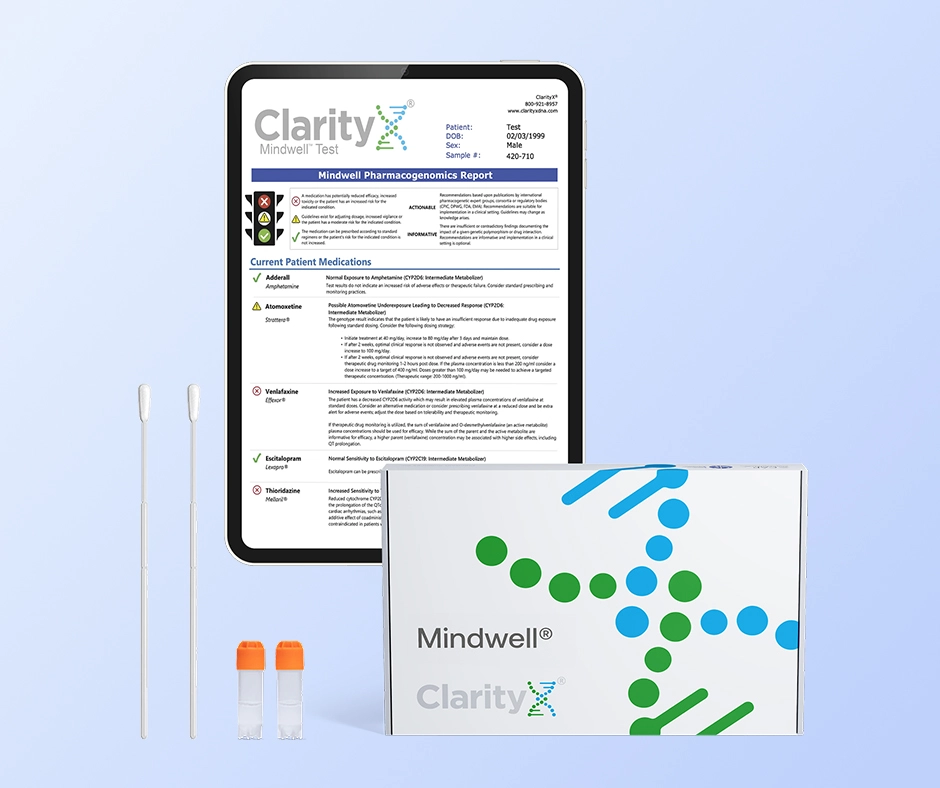Key Highlights
- Ranexa® (Ranolazine) is a medicine used to treat chronic angina, which is a heart condition causing ongoing chest pain.
- This medication improves oxygen supply and helps the heart use oxygen more efficiently, without greatly changing the heart rate or blood pressure.
- It may take a few weeks for Ranexa to start easing angina symptoms fully.
- How fast it works can depend on factors like your metabolism, dosage, and any other medical conditions you may have.
- Talking with a healthcare professional to find the right Ranexa dosage and learn about possible side effects is important.
Introduction
Chronic angina typically arises from coronary artery disease and may indicate cardiovascular disease. It can significantly reduce a person's quality of life. Fortunately, medications like Ranexa (Ranolazine) are available that may be able to help improve symptoms. This drug functions uniquely to help alleviate the painful symptoms of this condition. In this blog post, we will provide detailed information about Ranexa. We will focus on how it works, how to use it, and some helpful things to keep in mind as you talk about your treatment with your healthcare providers.
Understanding Ranexa
Living with chronic angina can be challenging, as frequent chest pain can have a significant impact on quality of life. Medications like Ranexa are important options to help manage these symptoms.
What is Ranexa and what are its primary uses?
Ranexa® (ranolazine) is a prescription medication used to manage chest pain associated with chronic angina. Chronic angina refers to recurring chest pain or discomfort, typically caused by reduced blood flow to the heart muscle. This decreased blood supply often occurs due to narrowed coronary arteries associated with coronary artery disease, and it is frequently managed with beta blockers or calcium channel blockers that help reduce strain on the heart.
When blood flow decreases, the heart does not receive the oxygen it requires to function properly. This can result in severe chest pain known as angina pectoris. While Ranexa is not a cure for coronary artery disease, it is intended to help manage the symptoms of chronic angina.
By enhancing the heart's ability to function with less oxygen, Ranexa can decrease the frequency and severity of angina attacks.
How does Ranexa function in the body?
A key aspect that distinguishes Ranexa from other angina medications is its mechanism of action. Many drugs primarily target heart rate or blood pressure. However, Ranexa addresses angina differently. The complete details of its effects are complex and not entirely understood. Nonetheless, studies indicate that it enables the heart muscle to utilize oxygen more efficiently.
This improved utilization of oxygen allows the heart to function effectively, even when blood flow is reduced. It also decreases the frequency and severity of angina pain episodes. A significant aspect of this action is that it alleviates symptoms without considerably altering heart rate or blood pressure.
This makes Ranexa a good choice for people who might have trouble with the side effects of other medications.
Dosage and Administration of Ranexa
Understanding the correct dosage and administration of Ranexa is crucial. This ensures maximum benefits while minimizing potential risks. The dosage for Ranexa may vary depending on your medical history, the severity of your condition, and your response to treatment.
Potential variability in metabolism is also crucial to account for. Ranexa is extensively processed by the liver. Individuals with reduced liver function may need to avoid the medication entirely. Also, medications that influence CYP3A4 liver enzymes may require alternative dosing approaches for Ranexa when used together. Genetics may also play a role. For instance, individuals with reduced CYP3A4 function may be more likely to experience side effects.
You should never change the dosage or the way you take it without first consulting a healthcare professional. They can provide tailored advice suited to your needs and address any questions you may have about Ranexa.
Recommended dosage for different conditions
The usual starting dose for Ranexa is 500 mg, taken twice daily with meals. It is crucial to adjust the dose only with the assistance of a healthcare professional. They will monitor your response to the medication and track the time required to adjust the dose for optimal results while minimizing side effects.
These guidelines are general. The specific dose your healthcare provider prescribes may vary depending on your personal situation.
Tips on how to properly take Ranexa
It’s important to swallow the extended-release tablets whole; do not crush or chew them. This allows the medication to release steadily. If you can’t swallow the tablets whole, consult your healthcare provider. They may suggest using extended-release granules instead.
If you have the granules, take the contents of the packet and sprinkle them on a tablespoonful of soft food, such as applesauce or yogurt. Consume it immediately without chewing the granules. Proper storage of the medication is also essential. Keep Ranexa at room temperature, and ensure it does not become too hot or humid.
If you miss a dose, don't take two at once. Simply return to your regular schedule with the next missed dose.
Efficacy and Timeline
Many people wonder, "When will I feel the effects of Ranexa?" It's natural to want relief quickly. However, it's important to understand that Ranexa may require some time to become effective. The time it takes to experience the full benefits of Ranexa can vary. It depends on factors such as your metabolism, the severity of your condition, and your overall health. Because the medication is meant to help prevent symptoms, assessing how well a particular dose is working can also take some time.
What is the typical onset time for Ranexa's effects?
For most people, a reduced frequency or severity of angina symptoms may be apparent within a few weeks of starting Ranexa.
Stopping or changing the dose without consulting your healthcare provider can affect the efficacy of ranolazine and may cause angina symptoms to recur. Remember that the speed at which ranolazine takes effect and its overall effectiveness can vary from person to person.
Several factors can lead to this difference. These include how your body metabolizes the drug, the severity of existing health issues, and how closely you follow the medication schedule. Therefore, it's very important to continue communicating with your healthcare provider and to keep your follow-up appointments. This will help monitor your progress and make informed decisions about your medication.
Factors affecting how quickly Ranexa works
Dosage is a primary factor in determining effectiveness, and some important factors may impact the approach. Reduced liver or kidney function may require a more conservative approach and careful monitoring. Ensuring the medication is properly metabolized and eliminated from the body is critical. Other medications can impact metabolic rates (e.g., CYP3A4 inducers), so it’s important to inform your healthcare providers about all your medications. Dosing is frequently limited when interacting medications need to be continued alongside Ranexa. Genetics may also play a role in determining the activity of liver enzymes like CYP3A4. Accounting for these sources of variability is crucial, as it helps reduce the risk of side effects.
Side Effects and Warnings
Ranexa is often well-tolerated when used appropriately, but there are some important potential effects to watch for.
Common side effects to anticipate
Common side effects of Ranexa include:
- Dizziness
- Nausea
- Fatigue
- Constipation
- Headache
Some side effects may improve as the body adjusts to the medication. However, if any side effects don't go away or worsen, it’s important to tell your healthcare provider.
They may suggest changes to your medication or provide tips on managing these side effects. For example, taking Ranexa with food may help alleviate nausea. Additionally, drinking more fluids and consuming foods high in fiber may aid in relieving constipation caused by the medication.
Serious side effects and their indicators
Many side effects associated with Ranexa are manageable. However, it is important to be aware of the potential for serious side effects. One such serious side effect is QT prolongation, which refers to a change in the heart's electrical activity. This condition can lead to a dangerous heart rhythm disturbance known as Torsades de Pointes. The risk may be heightened if Ranexa is taken alongside other medications that also extend the QT interval.
Arrhythmias caused by QT prolongation associated with Ranexa use are relatively rare, but knowing their warning signs is important. Symptoms such as an irregular heartbeat, dizziness, lightheadedness, or fainting, as well as swelling of the lower legs, should never be ignored. They require immediate medical help.
Your healthcare provider will likely monitor your heart rhythm regularly, particularly if you have a history of heart rhythm issues. This is especially important when you begin taking Ranexa or if your dosage changes. This helps decrease the risk of these problems.
Conclusion
Ranexa is a helpful treatment option for chronic chest pain associated with coronary artery disease. It helps reduce the frequency and severity of symptoms, but it can take some time (often several weeks) to gauge how well a particular dose works. Communicating with your healthcare providers is important to ensure the treatment remains safe and effective.
Lastly when considering treatment options like Ranexa your genetics can also play a vital role in determining which medications will be best suited for you. A simple test can help reduce the trial and error process associated with finding the right medication. Find out more by visiting www.clarityxdna.com
Frequently Asked Questions
Does Ranexa work immediately?
No, Ranexa differs from some medications that take effect immediately. It generally requires time to display its full benefits. While some individuals may experience slight improvement sooner, for most, it can take a few weeks to notice significant changes in their angina symptoms. Always consult your healthcare provider for personalized advice.
Can Ranexa be taken on an empty stomach?
It is generally recommended to take Ranexa with food. This may help reduce side effects such as nausea. However, your doctor might provide special instructions based on your individual needs.
References
https://dailymed.nlm.nih.gov/dailymed/drugInfo.cfm?setid=f0cbc60a-5ef0-4ba9-9863-b065360bca21
https://pmc.ncbi.nlm.nih.gov/articles/PMC4943285/
https://www.ncbi.nlm.nih.gov/sites/books/NBK507828/
https://pmc.ncbi.nlm.nih.gov/articles/PMC4077852/
https://clarityxdna.com/blog/learn/beginners-guide-to-understacyp3a4-drug-metabolism/
https://clarityxdna.com/blog/learn/pharmacogenetics-testing/





